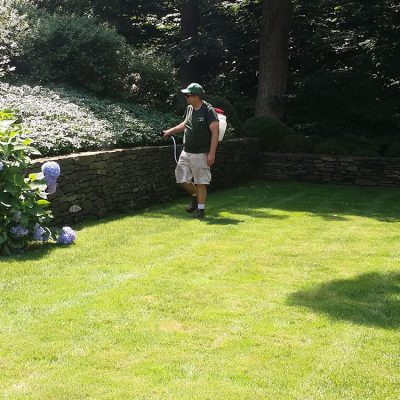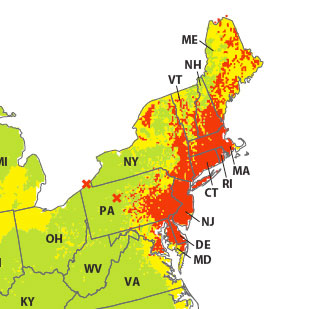 While 100% control is not possible, drastic reductions in tick populations can be achieved. Pesticide applications are one method of significantly reducing the populations. However, when in an area where ticks are common, wear long sleeved shirts and pants. Use of a tick repellent can assist in better coverage, but upon returning it is important to inspect your clothing and skin thoroughly including your head.
While 100% control is not possible, drastic reductions in tick populations can be achieved. Pesticide applications are one method of significantly reducing the populations. However, when in an area where ticks are common, wear long sleeved shirts and pants. Use of a tick repellent can assist in better coverage, but upon returning it is important to inspect your clothing and skin thoroughly including your head.
Lawn Solutions Applies our Organic Tick Control Program 3 times a year; Spring, Summer and Fall. We target outer perimeter of the property as well as around the home and high traffic areas. All clients who sign up for our tick control program will get an additional lawn protection application that will be applied during the summer service. We utilize an I.P.M. (Integrated Pest Management System) approach as to be conscious to the environment and what is being applied. Please feel free to contact us with any questions you may have.
The Tick Life Cycle
After hatching from an egg in late spring, deer ticks go through three life stages: larva, nymph, and adult. Each stage requires a different host animal, and they will only feed once during that particular stage. A deer tick needs 2 years to complete its life cycle. The larvae are tan and small (the size of a pin head). They feed primarily in late summer on small rodents (mice, chipmunks, etc.). A newly hatched deer tick does not initially carry Lyme disease, but rather is obtained from an infected animal.

Lyme Disease Human Risk Map
The next stage is the nymph and is about the size of a poppy seed. They are beige, sometimes appearing transparent with a dark head. The nymphs feed during the summer months on larger animals (dogs, raccoons, humans, etc.). Once engorged the nymph will fall of and molt into an adult. The adult will then seek out a host on large animals such as deer or humans. Most cases of Lyme disease do not occur from adults as they are rather large and usually identified early enough to not transmit the disease. They will feed and then mate either on or off the host, and then overwinter in leaf litter or other surface vegetation. In spring they will lay their eggs and die. Each female can lay around 3,000 eggs and they will hatch in late summer to start a new cycle.
